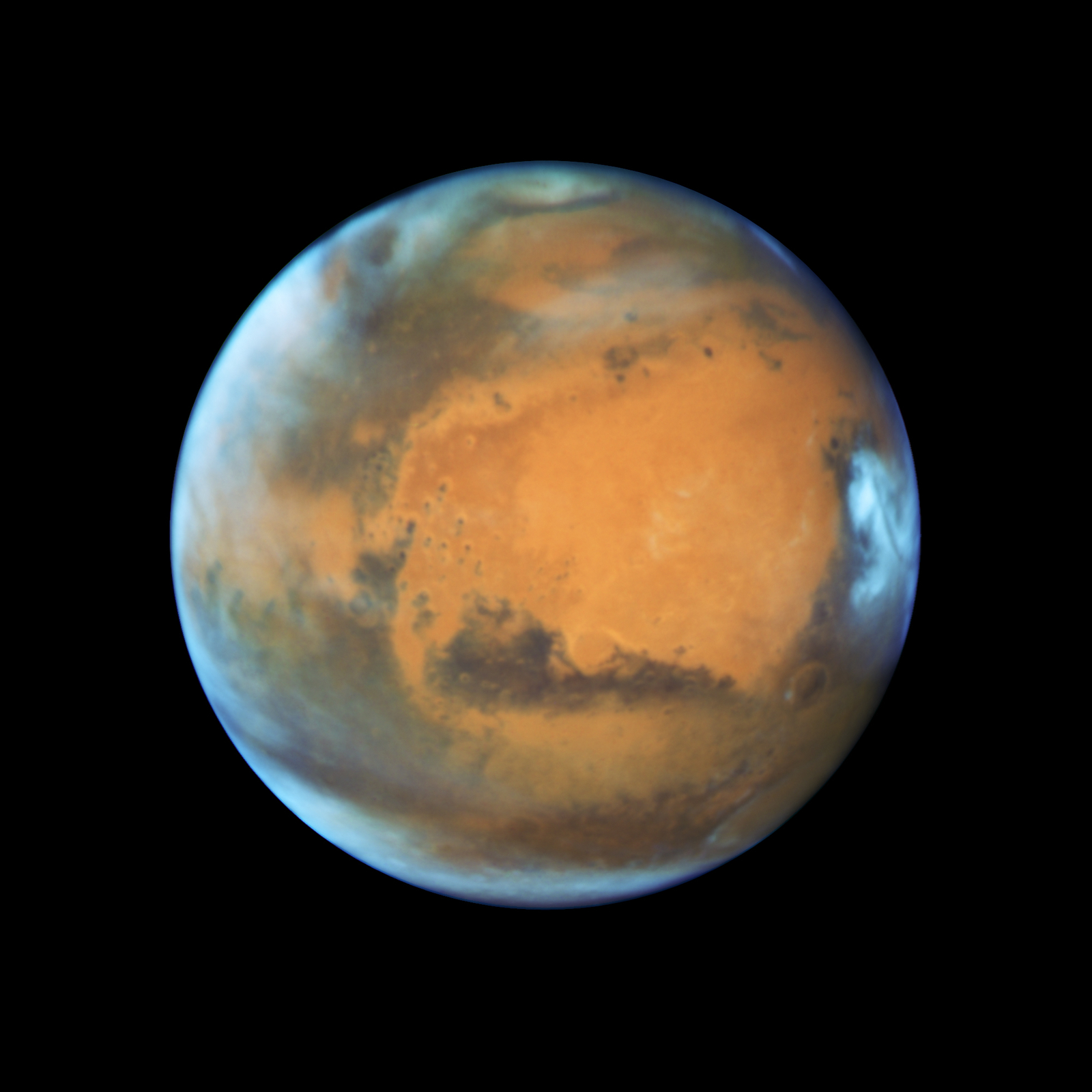Last week while giving a talk on Mars, I was reminded of the times when, as a kid, I used to sketch the features of the Red Planet seen through a telescope in my back yard. It is possible to see some of those features (polar caps, darker and brighter albedo regions, and sometimes clouds) with a telescope having a mirror six inches (~150 mm) or larger in diameter. The features become obvious when the Earth passes Mars, as is happening this year.
The closest approach will be in early October, when the Red Planet comes within 39 million miles (62 million kilometers) of Earth. Opposition—when Mars and the Sun are opposite each other from the Earth’s perspective—will occur just a little later, on the 13
<!-- wp:image {"background": {"contentType": "image", "id": 338585, "url": "https://science.nasa.gov/wp-content/uploads/2024/03/7834_hubble-mars-opposition-2016-full2.jpg", "alt": "Mars glob", "caption": "Hubble Takes Mars Portrait Near Close Approach", "credits": "NASA, ESA, Hubble Heritage Team (STScI/AURA), ASU, SSI
", "zoom": 0, "fit": "fit", "parallax": "no", "focalPoint": {"x": ".50", "y": ".50"}}, "image_align": "inline", "migrated": true} -->

th
of October. As this date approaches, Mars will appear to move quite rapidly against the background of stars from night to night. Right now, it is “moving” from Aquarius to Pisces, visible in the eastern sky in the early morning before dawn.
Back in Gale Crater, Curiosity is finishing its very brief investigation of “Bloodstone Hill.” It will start the day with documentation imaging by Hazcam and Navcam of the APXS overnight target, and stowing of the arm. That will be followed by Mastcam observations of “Chambers Street” and calibration targets. ChemCam and Mastcam will both make observations of “Skaw,” which is a rock that was scuffed by the rover wheel. Curiosity will then drive back downhill for a planned distance of ~60 m. There will be post-drive imaging by Navcam, looking at the rearward terrain and the rover deck. MARDI will take an image of the terrain below the rover after the drive. REMS, RAD, and DAN will also take data. With that, Curiosity should be back on the road (figuratively speaking) toward the sulfate unit.
Written by Roger Wiens, Geochemist at Los Alamos National Laboratory




























